Vietnamese calligraphy, a millennial art in constant evolution, holds a central place in the country's culture for centuries. This ancient art, merging writing and painting, reflects Vietnam's tumultuous history and continues to evolve in the modern era. Let's delve into the origins, history, and perspectives of this fascinating practice.
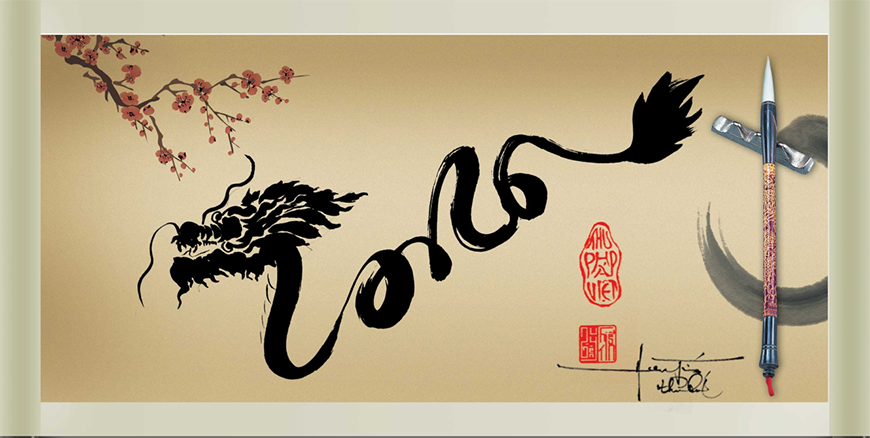
In the modern era, Vietnamese calligraphy not only survives but reinvents itself - Source : Internet
Origins: Chinese Influence
The roots of Vietnamese calligraphy date back to the period when Vietnam was under Chinese domination, from 111 BC to 939 AD. During this time, the Vietnamese adopted Chinese characters (Hán) to transcribe their language. Calligraphy, already highly developed in China, naturally found its place in Vietnam.
Vietnamese scholars learned to skillfully handle the brush, reproducing ideograms according to the strict rules of Chinese calligraphic art. They practiced tracing strokes in a specific order, respecting the proportions and balance of the characters. This practice required patience, concentration, and years of training.
History: From Adaptation to Innovation
Over the centuries, Vietnamese calligraphy has enriched and diversified, reflecting the country's political and cultural changes. Alongside the use of Chinese characters, the Vietnamese developed their own writing system: Nôm.
The exact origin of the Nôm writing system remains a subject of debate among historians. According to popular legends, Nôm was invented by Sĩ Nhiếp, a Chinese mandarin who ruled the Giao Chỉ district during the Chinese domination period (207 BC - 220 AD). Sĩ Nhiếp is said to have created Nôm to transcribe Vietnamese proper names that had no equivalent in Chinese.
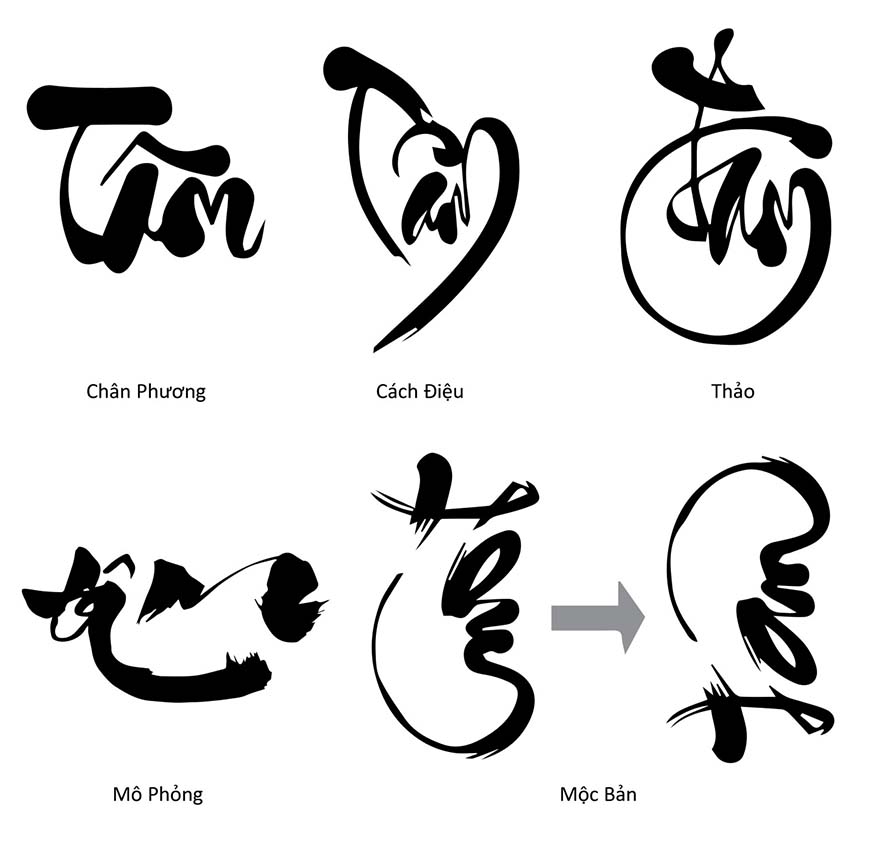
Different styles of calligraphy - Source : Internet
However, most historians agree that Nôm appeared later, between the 10th and 14th centuries, as Vietnam began to break free from Chinese domination. In fact, the Nôm writing system emerged to meet the need for a national script adapted to the Vietnamese language, influenced by Buddhism and the inadequacy of Chinese characters. Concurrently, this period also witnessed the emergence of distinct Vietnamese literature, and Nôm was used to write poems, religious texts, and official documents.
Nôm reached its peak in the 16th century under the Lê dynasty. It was used in all aspects of life, from literature to administration. However, its usage began to decline in the 18th century with the arrival of Catholic missionaries who introduced the Latin alphabet to Vietnam.
The Latin alphabet, known as "quốc ngữ," was easier to learn and use than Nôm, quickly becoming the dominant script in Vietnam. Today, Nôm is rarely used. It is mainly studied by specialists in Vietnamese literature and calligraphy. However, Nôm remains an important part of Vietnamese history and culture, continuing to inspire modern Vietnamese artists and writers.
Tho Luc Bat or Vietnamese haiku
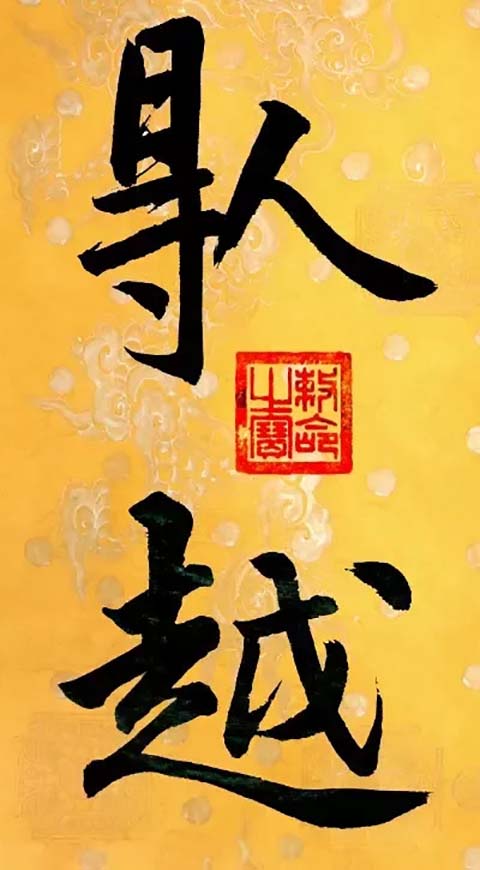
Contrary to the strict structure and absence of rhyme in Japanese haiku, luc bat poetry is more flexible and often incorporates rhyme in its verses. Each stanza consists of lines of six and eight syllables, totaling fourteen syllables per stanza. This rhythmic pattern creates a melodic flow that captures the essence of Vietnamese storytelling.
The
Vietnamese writing system, called "chữ Nôm," is based on Chinese characters but has evolved over centuries to include characters unique to the Vietnamese language. During the development of the Nôm script to transcribe Vietnamese, calligraphers began to experiment with more free and expressive forms. It is in this context that Vietnamese haiku, or thơ lục bát dân gian, flourished, allowing artists to break free from the strict rules of formal calligraphy and explore new creative avenues.
So, what sets
Vietnamese haiku apart? Firstly, it is characterized by quick, dynamic, and often asymmetrical strokes that give a sense of spontaneity and movement. Unlike more formal calligraphy, where each stroke is carefully measured and balanced, Vietnamese haiku prioritizes personal expression and emotion. Calligraphers practicing this art strive to capture the spirit and essence of the words they write, rather than solely focusing on their form. Each character thus becomes a unique work of art, where the interaction between ink and paper creates distinct textures and nuances.
In modern times, Vietnamese haiku continues to inspire contemporary artists. It is often integrated into modern artworks, blending haiku tradition with innovative techniques such as digital art, murals, and even performance art. This cursive writing remains a powerful symbol of Vietnamese cultural identity, embodying both the richness of the country's heritage and its creative dynamism. By showcasing Vietnamese haiku works in galleries and museums worldwide, artists contribute to the recognition and appreciation of this unique form of calligraphy.
But let's continue our journey through time...
In the 17th century, European missionaries introduced the Latin alphabet to transcribe Vietnamese, giving rise to Quốc Ngữ. Officially adopted in 1918, this new script revolutionized the practice of calligraphy. Calligraphers had to adapt their art to this new system, blending traditional techniques with the modern alphabet.
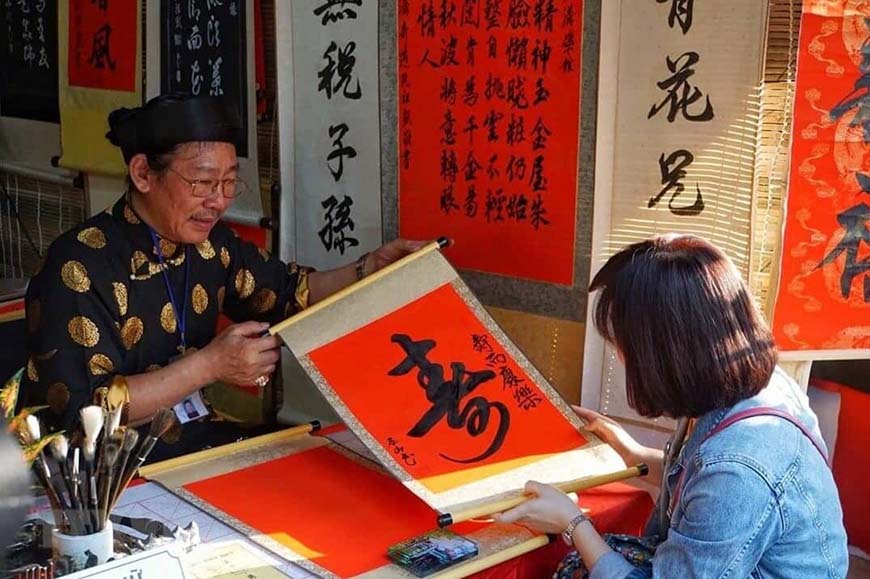
Calligraphy is in great demand during the Lunar New Year Tet period - Source : Internet
Present day: Between tradition and modernity
Modern Vietnamese Calligraphy: An evolving art
In the modern era, Vietnamese calligraphy not only survives but reinvents itself. Contemporary artists explore new techniques and incorporate international influences while remaining faithful to ancestral traditions. The use of digital tools and new materials pushes the boundaries of this ancient art. Contemporary artists no longer limit themselves to ink and paper; they experiment with diverse mediums, from interactive installations to light projections. This fusion of traditional and modern creates works that are both rooted in the past and forward-looking.
Exhibitions of Vietnamese calligraphy attract an increasingly diverse audience, both nationally and internationally. Contemporary works, while respecting the basic principles of calligraphy, stand out for their originality and creativity. Modern artists are not afraid to merge calligraphy with other forms of art, such as painting, sculpture, or even performance. Imagine a performance where a calligrapher creates a piece live, each brushstroke accompanied by music and dance, transforming the act of creation into a captivating spectacle.
Let's take the example of the artist Trần Quốc Ân, a Vietnamese artist and calligrapher known for creating books and artworks of extraordinary dimensions (such as his 54 kg brush-written book). Born in 1961 in Nha Trang, he stands out for his talents as a calligrapher and painter through his poetry books. Trần Quốc Ẩn leads the Calligraphy and Painting Club in Nha Trang.
Another example is Trịnh Tuấn, known for blending traditional calligraphy with modern elements. Often incorporating traditional Vietnamese symbols and motifs in his works, his art showcases creativity and innovation in the art of calligraphy.
We can also mention Nguyễn Quang Thắng, recognized for his mastery of different calligraphy styles, including Chinese characters and chữ nôm. His work often emphasizes the preservation and promotion of traditional Vietnamese culture. He is also involved in teaching and passing on the art of calligraphy to younger generations.
Modern Vietnamese calligraphy is also influenced by international art movements. Artists draw inspiration from Japanese minimalism, Western abstract expressionism, and even digital art to create works that transcend cultural boundaries. This openness to external influences enriches the art of calligraphy, making it more dynamic and relevant in today's world.
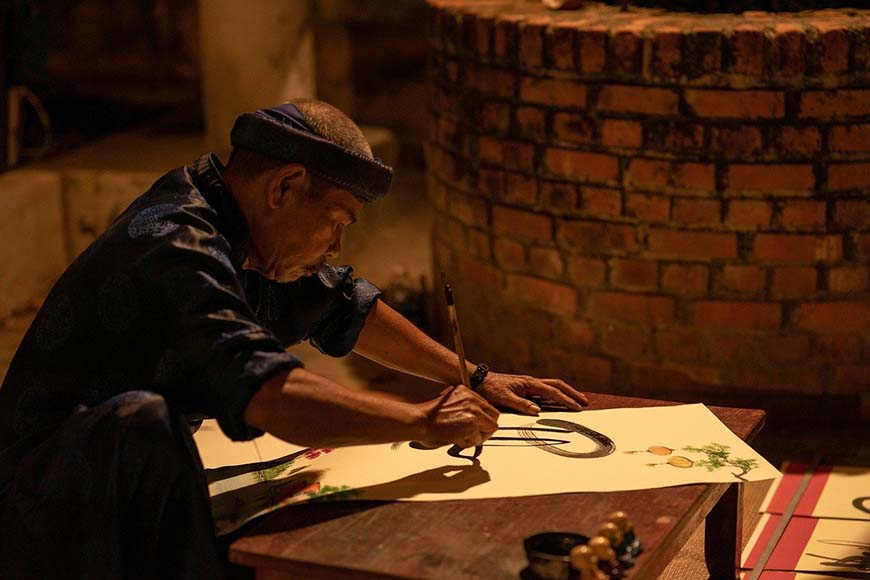
A master of calligraphy - Source : Internet
In conclusion: A living heritage
Vietnamese calligraphy, with its deep roots and ever-evolving branches, continues to fascinate and inspire. This millennia-old art, bearing witness to Vietnam's history and culture, adapts and reinvents itself with each generation. Whether through the works of ancient masters or the bold creations of contemporary artists, Vietnamese calligraphy remains a living, vibrant, and ever-changing heritage. Whether in its traditional form or its most contemporary expressions, this ancient art has a bright future ahead.